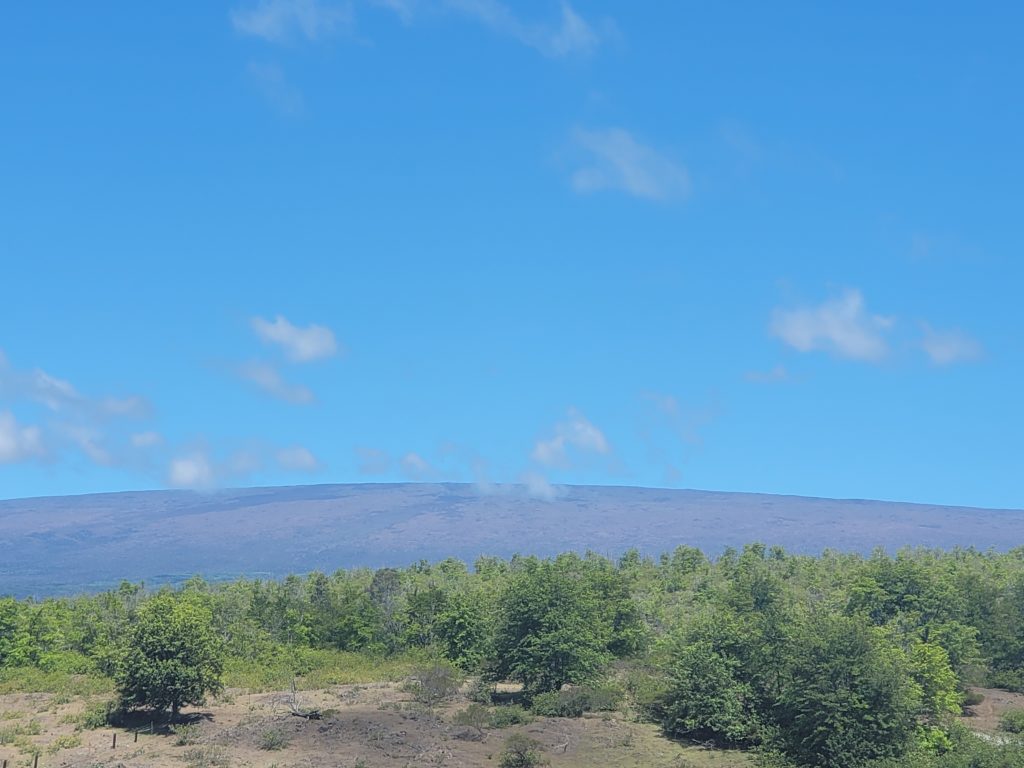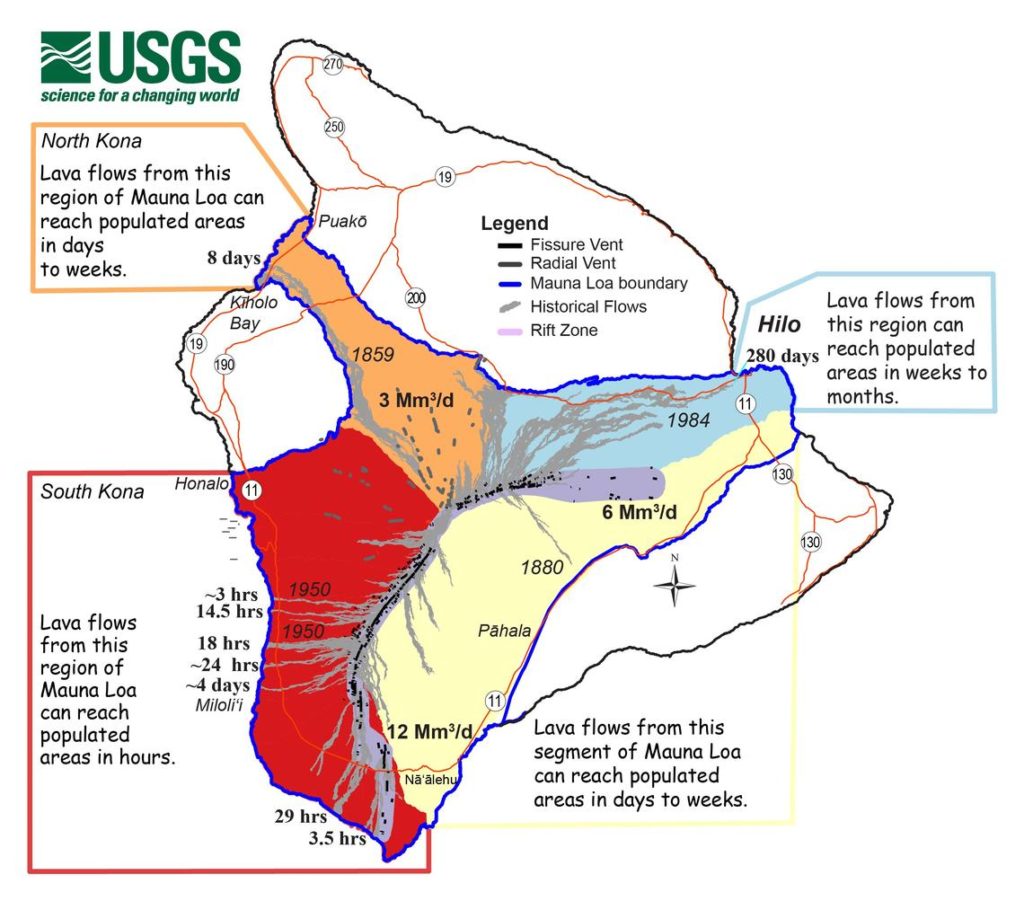
More than 100 people have reported to USGS that they felt an earthquake near the world’s largest volcano: at 7:11 pm local time / 1:11 am ET, a magnitude 4.0 earthquake struck near Pahala, Hawaii, near the Mauna Loa volcano. Light shaking was reported in the first hour after the earthquake by 111 people using USGS’s “Did you feel it?” online reporting tool across Hawaii’s Big Island.
Mauna Loa is considered the largest active volcano on Earth, rising to 13,681 feet above sea level. Mauna Loa rises up from the ocean floor of the Central Pacific at a depth of about 3 miles. Because of the volcano’s significant mass, the ocean floor directly beneath Mauna Loa is depressed by another 5 miles. According to USGS, this places Mauna Loa’s summit about 56,000 feet above its base; the enormous volcano covers half of the island of Hawaii, also known simply as the “Big Island of Hawaii.”
Mauna Loa eruptions tend to produce voluminous, fast-moving lava flows that can impact communities on the east and west sides of the Big Island from Kona to Hilo. Since the 1850s, Hilo in eastern Hawaii has been threatened by 7 Mauna Loa lava flows. On the south and west sides of the island, Mauna Loa lava flows have reached the coast there 8 times: in 1859, 1868, 1887, 1926, 1919, and three times in 1950.

Many scientists believe that lava flows underneath Pahala are on its way to Mauna Loa Volcano and Kilauea Volcano, a volcano that has been erupting for months now. Fortunately, the depth and location of this earthquake is consistent with the elevated deep activity around Pahala since 2019 and not indicative of a significant eruption at either volcano. In fact, USGS says these types of earthquakes generally do not change ongoing activity on Mauna Loa or Kilauea. Nevertheless, scientists are closely monitoring both volcanoes for any changing behavior.
According to USGS, while Mauna Loa is not erupting right now , rates of deformation and seismicity remain elevated above long-term background levels. GPS measurements continue to show slow, long-term summit inflation consistent with magma supply to the volcano’s shallow storage system.